







































MIDWEEK UPDATE 7 JULY 2022
Google Banner Ad



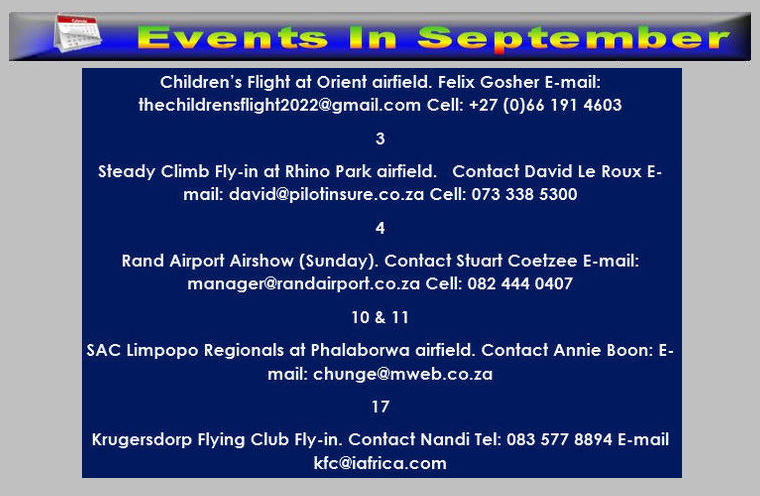




JSX-2T PROTOTYPE UNDER CONSTRUCTION: RESERVE YOUR SUBSONEX 2-PLACE JET TODAY

Beginning July 1, 2022 Sonex will be accepting Kit Reservation Deposits for SubSonex JSX-2T. These pre-orders will allow customers to get in-line for the first kits, anticipated to begin production in the 2nd Quarter of 2023 with shipments estimated to begin during the Fall/Winter of 2023. See full SubSonex JSX-2T Deposit Terms & Conditions for all details.
JSX-2T is configured with side-by-side seating for optimum flexibility in CG/loading and offers an ideal training environment for its crew. The two-place jet will utilise the same proven PBS TJ-100 turbojet engine system, and with a wing span of 21.8 feet JSX-2T will have similar wing loading and handling to the single-place JSX-2.
JSX-2T is destined to be an outstanding choice for those demanding an affordable 2-place recreational personal jet!

UN ENCOURAGES SA COMPANIES TO BID FOR AVIATION SERVICES CONTRACTS
Written by Guy Martin defenceWeb

One of the largest acquisitions of services by the United Nations is for air transport, and South African companies are being urged to bid for these contracts as local companies have the necessary capabilities and experience.
This is one of the outcomes that emerged from the United Nations Procurement Summit hosted at the CSIR in Pretoria last Friday, where senior UN officials unpacked UN procurement processes and requirements.
In 2021, the UN Secretariat spent nearly $3 billion on procurement, with the largest single item ICT ($418 million), followed closely by air transport ($394 million), with building and construction coming in third at $331 million. Fuels, including aviation fuel, were number five at $234 million.
In 2021, 14.5% of all UN Secretariat spend was on aviation contracts. As spend was impacted by the Covid-19 pandemic, the UN pointed out that aviation is usually the number one spend category, as was the case in 2019, when the Secretariat spent $478 million on air transport, followed by ICT at $418 million, and fuels at $372 million.
Commercial aviation expenditure dropped slightly during the pandemic, but is on the rise again. For example, commercial aviation spend was $461 million in 2018, $478 million in 2019, $371 million in 2020, and $394 million in 2021.
On average, annual expenditure for long term air charter services amounts to 70% of all aviation spend.
There are five main pillars of the UN's aviation procurement: long term air charter for the transportation of cargo and passengers in mission areas; aeromedical evacuation; long term air charter agreements for the strategic movement of troops in and out of missions; ad hoc/VIP requirements; and intelligence, surveillance and reconnaissance (ISR).
As of June 2022, the UN had 173 fixed and rotary wing aircraft on commercial contracts and military letters of assistance around the world. This is as follows: MINURSO in Western Sahara (5); UNSMIL in Libya (1); UNFICYP in Cyprus (3); UNIFIL in Lebanon (7); UNAMI in Iraq (2); UNAMA in Afghanistan (2); UNMHA in Yemen (2); UNITAMS in Sudan (3); UNSOS in Somalia (23); UNISFA in Abyei (11); UNMISS in South Sudan (26); MONUSCO in the DRC (41); MINSUCA in the CAR (21); UNOWAS in Senegal (1); UNVMC in Colombia (2); and MINUSMA in Mali (49). Of these missions, MINUSMA, MONUSCO and MINUSCA operate a combined 26 unmanned aerial vehicles, including Aladdin, Luna, Heron I, Orbiter 2/3 and Falco Evo aircraft.
The majority (67%) of UN aerial assets are rotary wing, with 20% fixed wing and 13% unmanned. Rotary wing assets include Bell 212, CH-146/147, MD500, Mi-17, Mi-24, Mi-26, Mi-8, Oryx, Puma and Rooivalk helicopters. Fixed wing aircraft range from large to small, and include C-130/L-300 Hercules, Saab 340s, Il-76s, Beech 1900s, ATR 72, An-26s and others.
Procurement Assistant Jean Murphy and Remy Raul, Procurement Officer with the aviation division of the UN's Procurement Division, told summit attendees that the UN is shifting from guaranteed air ambulance contracts to more on-call (not dedicated) requirements and is also shifting to standby/not guaranteed contracts for ad hoc passenger transport. It expects to issue more ISR requirements in the coming few months.
Current opportunities include multiple solicitations for mission air assets; requests for proposals (RFPs) for UAVs and ISR services, with upcoming opportunities including fixed and rotary wing services in support of UN peacekeeping operations; fixed and rotary wing services in support of UNITAMS in Sudan; global strategic troop movement flights; regular heavy cargo flights for UNMISS and MONUSCO, and ISR services for multiple missions.

AFB DURBAN STRATEGY TO BE RE-ALIGNED - CAF
Written by defenceWeb
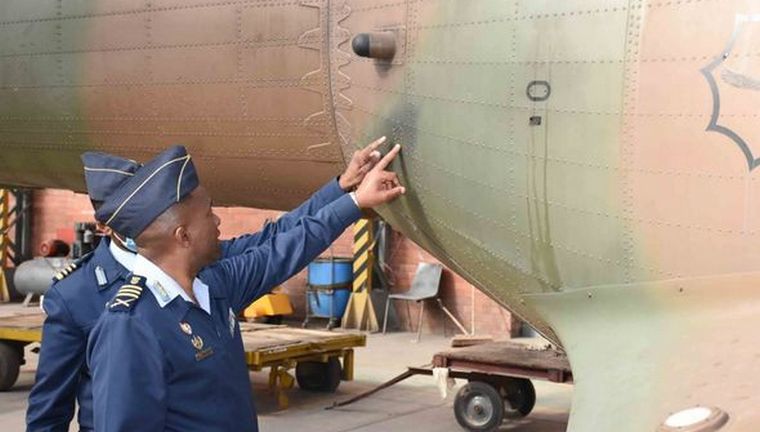
Air Force Base (AFB) Durban, along with much of KwaZulu-Natal, was on the receiving end of torrential rain and subsequent flooding which severely affected day-to-day operations from April.
Willingness to work and respect the SA Air Force (SAAF) uniform and its association to serving the country saw the men and women of the base - the last aviation occupant of what was Durban International Airport - put in the sweat equity to ensure work continued.
This dedication was acknowledged by SAAF Chief, Lieutenant General Wiseman Mbambo, during a recent visit.
He told base personnel their "cleaning and regeneration efforts" were essential to the base "getting back to normality".
"Their resilience during such a difficult situation is applaudable, considering the base still fulfilled its obligation during Operation Chariot (sic)," the three-star general is reported as saying by Lieutenant Phuti Badimo on a SA National Defence Force (SANDF) social media account.
While at the base, Mbambo visited its sole flying squadron - 15 - and the mixed A109 and Oryx fleet it operates as well as the combined dining facility and the transport, firefighting and military police sections, as well as a vehicle workshop and servicing hangar.
The visit also took in a temporary base built to ensure operations continue. 18 Deployment Support Unit was responsible for keeping AFB Durban going in temporary premises.
Deputy CAF, Major General Innocent Buthelezi, told base personnel it was strategically important for the base to become fully operational again, bearing in mind 15 Squadron's large area of responsibility. As the only SAAF squadron in KwaZulu-Natal, 15 Squadron is regularly tasked for both mountain and sea search and rescue operations.
Support came from his three-star boss with Mbambo reported as saying: "We need to rethink the strategy of this base and align it with the SAAF vision. Quantification, expenditure and time allocation for projects, once again, is necessary to restore the base".

Written by Guy Martin defenceWeb
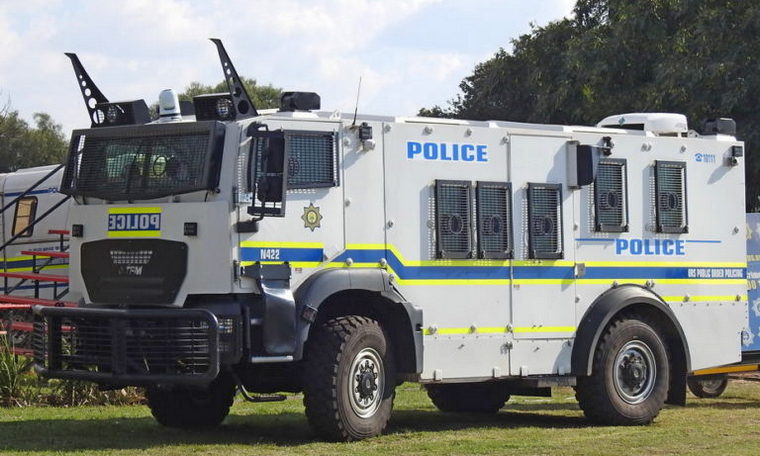
The SA Police Service (SAPS) is turning to the sky for assistance with crime prevention in the form of unmanned aerial vehicles (UAVs). The soon to be acquired UAVs, more commonly called drones, became public knowledge thanks to a Parliamentary question asked by Freedom Front Plus (FF+) leader Pieter Groenewald.
He was told in a written reply signed off by Police Minister Bheki Cele and recently appointed National Commissioner Fannie Masemola "the process of purchasing drones is underway" with 168 UAVs on order to be delivered in three batches.
Equipment to be fitted to the remotely controlled aerial platforms is not given in the official answer but, judging from planned use, will include cameras of some sort. "The drones will be used as part of policing, including in rural areas, as per implementation of the rural safety strategy," Groenewald was informed.
Drone deployment over the three delivery phases is set to be at 43 localities, including specialised units, provincial and district operational command centres (POCCs and DOCCs) as well as what is termed "safer city projects". "Satellite drone units" will serve "various police stations".
Rural safety committees at police station and district levels will be able to request drones as part of rural safety plans, Groenewald, a long-time proponent of more and better police utilisation in South African rural - particularly agricultural - areas, was told by the SAPS top men.

Four of the most iconic military aircraft built by Grumman will make a rare reunion appearance during EAA AirVenture Oshkosh 2022, as the "Flight of the Cats" will be part of the afternoon air shows on July 27 and 29.
The four Grumman airplanes - the F4F Wildcat, F6F Hellcat, F8F Bearcat, and F7F Tigercat - were developed within an eight-year period in the late 1930s and 1940s. They were best known for their roles within the U.S. Navy and Marines, although the Bearcat was used by air forces around the world as late as the early 1960s.
The reunion was made possible with the involvement of Rod Lewis and the Lewis Air Legends collection, one of the world's most impressive private assemblages of warbird aircraft.
During the afternoon air shows on July 27 and 29, the individual aircraft involved are scheduled to include the Wildcat, Bearcat, and Tigercat from the Rod Lewis' collection, with Evan Fagen at the controls of the Hellcat that is based at the Fagen Fighters WWII Museum in Granite Falls, Minnesota.
The Flight of the Cats will make AirVenture 2022 a spectacular warbird event, adding to such highlights as Jerry Yagen's Military Aviation Museum aircraft and others previously announced.

Cirrus Aircraft delivered the first of twenty-five SR Series TRAC20 aircraft to United Aviate Academy. The TRAC20 is an advanced, high-performance aircraft that will be used for initial pilot training at the only ab-initio flight academy operated by one of the largest U.S.-based airlines. In February, the company announced a purchase agreement with United Aviate Academy to purchase twenty-five TRAC20 aircraft with the option to acquire fifty more as the program grows.
United Aviate Academy's TRAC20 fleet is equipped with an integrated avionics suite essential for situational awareness and hazard avoidance, such as Synthetic Vision, Chart-View, Active Traffic and more. These advanced avionics will prepare United Aviate Academy students for their careers at regional and mainline airlines after graduation. Additionally, the hot weather package keeps students and instructors comfortable in the Goodyear, Arizona training environment. The hazard and traffic avoidance features provide extra safety in this dense flight training area.
Cirrus Aircraft offers an aircraft personalisation program where customers work with the Cirrus Aircraft Xi Design team to create a custom aesthetic for their aircraft using their own inspiration and vision. United Aviate Academy collaborated with the Xi Design team to create a unique livery featuring aspects of both brands. All twenty-five aircraft will feature this thoughtful design featuring the blue and white United Aviate Academy logo on the tail, fuselage, and crew seats as well as a wear-resistant interior.
"Cirrus Aircraft is proud to work with United Aviate Academy to provide the next generation of United Airlines pilots with a fleet of advanced training aircraft built with the Cirrus Airframe Parachute System. For over 30 years, Cirrus Aircraft has been at the forefront of numerous industry safety innovations and maintains a safety rating well above the industry average," said Zean Nielsen, Chief Executive Officer of Cirrus Aircraft. "Together, we are introducing more people to aviation and providing new opportunities for underrepresented populations by removing barriers and supporting new programs like United Aviate Academy."


History will come alive every day during AirVenture Oshkosh 2022 at the popular Warbirds in Review, held Monday through Saturday at 10 a.m. and 1 p.m. on Warbird Alley.
Hosted by EAA Warbirds of America, these informal sessions delve into an aircraft's restoration, operation, and other aspects of owning a valued piece of history, and also spotlight veterans sharing stories about what it was like to fly the aircraft in combat or support the operation as a ground crew member.
Presentations will be immediately followed by book signing opportunities in the Warbirds Merchandise Building. Check the schedule in the Warbirds Merchandise Building for featured books.
Aircraft featured will include; The Westland Lysander III, Hawker Hurricane Mk XIII, P-51 Mustang, de Havilland DH.98 Mosquito, Curtiss P-40 Warhawk, P-51B, P-51D Mustangs, P-39Q Old Crow, Grumman F7F-3P Tigercats, F4F-3 Wildcat, F8F-2 Bearcat, F6F Hellcat, Messerschmitt Me-109G-6s, North American F-100 Super Sabre, Douglas C-47A Skytrain, Bell UH-1 Iroquois and the Sikorsky UH-34D.
.jpg)
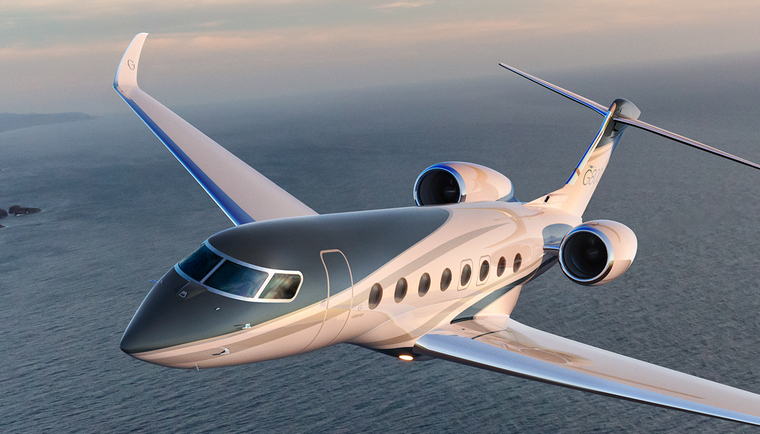
Gulfstream Aerospace Corp. today announced the all-new ultralong-range Gulfstream G800 successfully completed its first flight, officially launching the flight-test program of the industry's longest-range aircraft. Announced in October 2021, the G800 is the latest addition to Gulfstream's next-generation fleet to take flight and make progress toward customer deliveries.
The G800 departed Savannah/Hilton Head International Airport at 9:00 a.m. and landed there two hours later. In keeping with Gulfstream's commitment to sustainability leadership in aviation, the aircraft made the flight using a blend of sustainable aviation fuel.
"When the first G800 test aircraft rolled out at our announcement last fall, we changed the game once again for our industry," said Mark Burns, president, Gulfstream. "At Gulfstream, working closely with our customers allows us to continuously build on our successes and develop aircraft that exceed their expectations. The G800 pushes the boundaries of performance even further with Gulfstream-designed aerodynamics and cabin technology, and we look forward to our customers benefiting from the longer range at higher speeds in our exceptional cabin environment."
The G800 can fly 8,000 nautical miles/14,816 kilometres at Mach 0.85 and 7,000 nm/12,964 km at Mach 0.90 with class-leading fuel-efficiency, thanks to the combination of the Gulfstream-designed, advanced high-speed wing and all-new, high-thrust Rolls-Royce Pearl 700 engines.
The G800 also features the latest in Gulfstream's cabin technology and comfort, including hand-crafted, ergonomic seats; a high-definition circadian lighting system; 100% fresh, never recirculated air; the lowest cabin altitude in the industry; a plasma-ionisation air purification system; and 16 of the largest windows in the industry. Designed to seat up to 19 passengers, the G800 offers up to four living areas, or three living areas with a crew compartment.
The G800 is equipped with Gulfstream's next-generation Symmetry Flight Deck and dual head-up displays featuring the new Combined Vision System, which includes Enhanced Flight Vision System and Synthetic Vision System imagery, further enhancing safety and pilot situational awareness.
"We have announced eight new aircraft in the past decade, strategically timed to capture market demand," said Burns. "We are seeing great interest in the G800, and this first flight brings us even closer to delivering a Gulfstream for every mission."

This contract will see the Spanish Eurofighter fleet grow to 90 aircraft. With the first delivery due in 2026, these new aircraft will enhance and position the Spanish Air Force fighter fleet among its NATO allies with the most modern fighter jet developed in Europe, as well as securing industrial activity through to 2030.
'This additional order reinforces Spain's commitment not only towards the Eurofighter but also to its development and industrial environment. I would like to thank the customer for its firm position with respect to European defence at a time when it is needed most," said Mike Schoellhorn, CEO of Airbus Defence and Space.
The acquisition, valued at € 2.043 billion, was approved by Spain's Council of Ministers on 14 December 2021 and includes the aircraft, engines, a simulator and the necessary support services.
In service with Spain since 2003, the country's air force operates the Eurofighter from the air bases of Morón (11th Wing) and Albacete (14th Wing), securing Spain's territory and playing a key role at the heart of NATO in different Air Policing missions in the Baltics and more recently the Black Sea. With the arrival of these new aircraft, Spain will also equip a third base with Eurofighter jets, namely Gando on the Canary Islands, which is home to the 46th Wing.
The Spanish Eurofighter is assembled, tested and delivered at the Airbus Getafe site (Spain) and its industrial footprint translates into more than 20,000 direct and indirect jobs in Spain alone. The main national defence and technological companies are involved in the manufacturing process. Airbus has also been working at Getafe in co-ordination with the Armament and Experimental Logistics Centre (CLAEX) of the Spanish Air Force to make various modifications such as the implementation of the new CM02+ software package for the Tranche 1 Eurofighters. A major tactical improvement offered by this software is the new capacity for automatic targeting of air-to-surface weapons following integration of the Litening-III targeting pod. Further air-to-air and air-to-surface capabilities have also been introduced, along with improvements to the communications systems.
Eurofighter is Europe's largest defence programme, involving the four core nations of the United Kingdom, Spain, Germany and Italy. In addition to its technological capabilities, it secures more than 100,000 jobs in Europe. To date, the Eurofighter programme has logged 681 aircraft orders to 9 nations around the globe.

"The implementation of this agreement will provide the National Guard with a cost-effective and high-performance helicopter solution that satisfies the operational requirements set by the General Staff and addresses many of the future challenges of light attack helicopter fleets. Able to operate in very demanding environments, the H145M will enhance the National Guard's day and night capabilities in delivering rapid response, fire power and precision, providing effective combat support, and acquiring critical information," said Andreas P. Louka, Permanent Secretary of the Ministry of Defence of the Republic of Cyprus.
"The helicopter solution conceived by the National Guard/Air Force Command would not have materialised without Airbus' strong commitment to customer focus and satisfaction. For this reason, I thank Airbus Helicopters for their excellent co-operation and commitment to this project and I am deeply satisfied because this contract marks the initiation of a long-term relationship with Airbus, a corporation with a reputation in safety, reliability and highest production standards," he added.
"We would like to thank the Government of Cyprus for the trust they are placing in the H145M which is becoming the reference multi-role light attack helicopter on the market," said Olivier Michalon, Executive Vice President Global Business at Airbus Helicopters. "Operators can use it for tactical air transport, deployment of crisis response forces, fire support, armed reconnaissance as well as the evacuation of wounded or the liberation of hostages. There are now five different customers for the H145M in Europe, adding to the inter-operability of armed forces on the continent," he added. "We see a strong interest for the H145M across the world and we have several ongoing campaigns, which is very promising for this aircraft."
The H145M is a multi-role light utility military helicopter. Derived from the civil H145, the latest version of the H145M features a new, innovative five-bladed rotor that increases the helicopter's payload by 150 kg. The design of the new bearing-less main rotor also simplifies maintenance operations.
Equipped with the Airbus HForce weapons system the H145M can be operated as a light attack helicopter. The weapons range includes guns, rockets and missiles are currently being integrated. Combined with Manned-Unmanned Teaming capabilities and integration into networked combat, its bandwidth makes it the most performant helicopter in its class.
The H145 was developed as a civil model for day and night operations and in the most adverse conditions. It is used by armed forces, police and rescue teams all over the world. It is powered by two powerful Safran Helicopter Engines Ariel 2E turbines, controlled by the FADEC (full authority digital engine control) system. In addition, the helicopter is equipped with the Helionix digital avionics suite and thus offers not only innovative flight data management but also a powerful 4-axis autopilot, which considerably reduces the pilots' workload in their missions. Its particularly low noise emissions make the H145 the quietest helicopter in its class.
The H145M is already in service in Hungary (20), Germany (15), Serbia (9), Thailand (5) and Luxembourg (2). The US Army operates a fleet of more than 460 locally built civil helicopters of the H145 family under the name UH-72 Lakota.

The United States government and Sikorsky, a Lockheed Martin company, signed a five-year contract for a baseline of 120 H-60M Black Hawk helicopters, with options to reach a total of 255 aircraft to be delivered to the U.S. Army and Foreign Military Sales (FMS) customers. Sikorsky continues to modernize and enhance the Black Hawk to meet the Army's challenging and evolving missions by continuously delivering aircraft thanks to a hot production line, mature well-established supply chain and digital factory.
A HH-60M MEDEVAC takes flight at Sikorsky's headquarters in Stratford, Connecticut. Sikorsky continues to modernize and enhance the Black Hawk thanks to a hot production line, mature well-established supply chain and digital factory. Sikorsky Photo
The "Multi-Year X" contract for UH-60M Black Hawk and HH-60M MEDEVAC aircraft marks the 10th multiple-year contract for Sikorsky and the U.S. government for H-60 helicopters. With more than 2,100 H-60 variants in the U.S. Army's inventory, the Black Hawk continues to be the workhorse and backbone of U.S. Army Aviation. As the Army continues to develop its Future Vertical Lift (FVL) capabilities, they will continue to operate the H-60M for the next several decades and alongside the future fleet.
The contract value for expected deliveries is approximately $2.3 billion, with a potential value of up to $4.4 billion, should options for additional aircraft be fully exercised. Multi-Year X deliveries are scheduled to begin in July and continue through 2027.
"This Multi-Year agreement allows the Army to meet current and future capability needs through upgrades, remanufacturing, replacement, and technology insertions," said Col. Calvin Lane, the Utility Helicopters project manager. "The efficiencies of this contract make the best use of limited resources and result in direct savings to the Army and to taxpayers."
"Decades of Black Hawk production and enhancements, strong program execution and close partnership with the Army have kept the program thriving, and this contract is a testament to that success," said Nathalie Previte, vice president of Sikorsky's Army and Air Force programs. "Additionally, we continue to see strong international interest in the Black Hawk due to its versatility and proven record of providing unwavering support to the U.S. and nations around the globe."
"Sikorsky continues to invest in the Black Hawk platform - from sustainment to digital transformation and modernisation - in order to provide our customers with the competitive edge they require," added Previte. "We have aligned our investments with the Army's technology roadmap, while leveraging Future Vertical Lift technologies to ensure the Black Hawk will be a key player in the Joint All Domain Operations environment and FVL ecosystem."
The H-60M Black Hawk, the premier multi-mission combat assault utility helicopter, provides additional payload and range, advanced digital avionics, active vibration control, improved producibility, enhanced handling qualities and situational awareness, and improved survivability.

SOUTH AFRICA
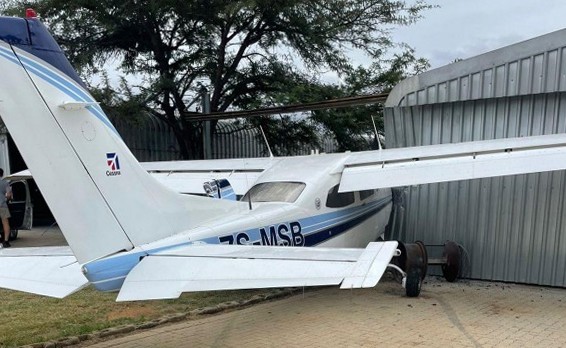
On Monday morning, 4 April 2022 at 0700Z, a private pilot flying solo on-board a Cessna T210N aircraft with registration ZS-MSB took off from Riverside Aerodrome near Malelane with the intention to land at Hoedspruit Civil Aerodrome (FAHT).
The flight was conducted under the provisions of Part 91 of the Civil Aviation Regulations 2011 as amended. No flight plan was filed; the flight time was approximately 40 minutes.
The pilot stated that he was in radio communication with air traffic control (ATC) at Air Force Base Hoedspruit Approach (Hoedspruit Aerodrome - FAHS) on the very high frequency (VHF) 126.40-Megahertz (MHz) and was cleared to land at FAHT, number two, on Runway 35 as it was the active runway. ATC indicated the wind to be 360° at 10 knots, which was the prevailing wind at FAHS at the time.
The pilot stated that he was familiar with FAHT as he regularly landed and took off from the aerodrome. The pilot stated that he had selected full wing flaps for landing and shortly after touchdown, the aircraft veered off to the right-side of the runway. He then applied the left rudder, but it had no effect. The pilot was unable to bring the aircraft to a stop and, thus, collided with Hangar Number 28 on the right-side of the runway.
The pilot was not injured during the accident sequence; he secured the aircraft post-crash before he disembarked unassisted. The aircraft sustained substantial damage.
Hoedspruit Civil Aerodrome (FAHT) FAHT is an unlicensed aerodrome with a single asphalt runway that is 1 200 metres (m) long and 9m wide, at an elevation of 1 800 feet (ft). All the hangars at FAHT are located on the right-side of Runway 35 and are positioned approximately 40m from the runway centrerline.
The first people who responded to the accident scene were a number of aircraft maintenance engineers (AMEs) as the hangar with which the aircraft collided was located next to the AMO's hangar.
The pilot mentioned to the AMEs that he thought the right brake might have locked; and they then disconnected the emergency locator transmitter (ELT) which had activated due to the impact. Both main wheels were inspected by the AMEs and it was found that they both turned freely, no evidence of binding was noted. The brakes were tested; and when the AMEs pushed the aircraft to the AMO's hangar, no anomalies were found.
The tyre/brake marking of the right wheel from the first touch (on the runway's surface) until impact with the hangar was approximately 260m, showing that the pilot had applied brakes until the aircraft impacted the hangar.
Probable cause:
The pilot landed with the right brake applied (depressed toe brake) on the rudder pedals; as he applied the left rudder to counteract the right yaw, he most probably applied additional pressure on the right brake, which caused the aircraft to yaw to the right. The pilot was unable to bring the aircraft to a stop and it collided with a hangar.

South Africa, Johannesburg-O.R. Tambo International Airport: The door on the left side was ripped off an EgyptAir Boeing 787-9 Dreamliner under unknown circumstances while the aircraft was on the ground at O. R. Tambo International Airport.

Russia, on approach to Moskva-Sheremetyevo Airport: An Aeroflot Russian Airlines Boeing 737-8LJ collided with a flock of birds at an altitude of 30 m on final approach to runway 06R at Sheremetyevo Airport. During the post-flight inspection, multiple collision marks were found on the aircraft structural elements, with damage to the left outer flap and a dent on the horizontal stabilizer.
Indonesia, Molof Village, Papau: A Pilatus PC-6/B2-H4 Turbo Porter with seven occupant's force landed on a road in bad weather conditions after fuel starvation. All occupants survived the crash. The airplane sustained substantial damage.

USA, Pearson Field, Vancouver, Clark County, WA: A Beechcraft V35B Bonanza after declaring an emergency crashed and flipped over while attempting to return to the airport, Pearson Field Airport (KVUO), Vancouver, Clark County, Washington. The sole pilot received fatal injuries and, the aircraft was destroyed by the crash and a post impact fire.
Netherlands, Zwarte Meer, near Kraggenburg: A Zelf Vliegen BV Blackshape BK160 Gabriél with two on board on a training flight crashed into the Zwarte Meer lake, near Kraggenburg. The two people onboard perished and the aircraft was destroyed.

USA, Pilots Ridge Airport, Carolina Beach, NC: A Piper PA-32RT-300 Lance II with two on board sustained substantial damage when it overran runway 09 and rolled into a retention pond during an aborted take-off attempt at Pilots Ridge Airport (03NC), Carolina Beach, North Carolina. The two onboard were not injured.
USA, Weltzien Skypark Airport, Wadsworth, Medina County, OH: A experimental kit-built Vans RV7A overran the runway during the landing sequence and impacted a guardrail and flipped over, at Weltzien Skypark Airport (15G), Wadsworth, Medina County, Ohio. The pilot received minor injuries.

Finland, Tokolanperä, near Raahe, North Ostrobothnia: A Comco Ikarus C42 made a forced landing in a field and came to rest in a ditch, close to the intersection of highway 8 and national road 88 in Tokolanperä, near Raahe, North Ostrobothnia. The pilot was not injured and the ultralight received substantial damage.

18 JULY 1974

NASA buys a Boeing 747 from American Airlines, and under a $30 million contract from Rockwell International, Boeing begins modifying it into the first Shuttle Carrier Aircraft.
The aircraft was extensively modified for NASA by Boeing in 1976. While first-class seats were kept for NASA passengers, its main cabin and insulation were stripped and the fuselage was strengthened. Mounting struts were added on top of the 747, located to match the fittings on the Shuttle that attach it to the external fuel tank for launch. With the Shuttle riding on top, the centre of gravity was altered. Vertical stabilizers were added to the tail to improve stability when the Orbiter was being carried. The avionics and engines were also upgraded.
An internal escape slide was added behind the flight deck in case of catastrophic failure mid-flight. In the event of a bail-out, explosives would be detonated to make an opening in the fuselage at the bottom of the slide, allowing the crew to exit through the slide and parachute to the ground. The slide system was removed following the Approach and Landing Tests because of concerns over the possibility of escaping crew members being ingested into an engine.
Ferry flights generally transported the orbiters from Edwards Air Force Base, the shuttle's secondary landing site, to the Shuttle Landing Facility (SLF) at the Kennedy Space Center where the orbiter was processed.
Google Banner Ad

 |
 |
 Copyright © 2024 Pilot's Post PTY Ltd
The information, views and opinions by the authors contributing to Pilot’s Post are not necessarily those of the editor or other writers at Pilot’s Post.
Copyright © 2024 Pilot's Post PTY Ltd
The information, views and opinions by the authors contributing to Pilot’s Post are not necessarily those of the editor or other writers at Pilot’s Post.